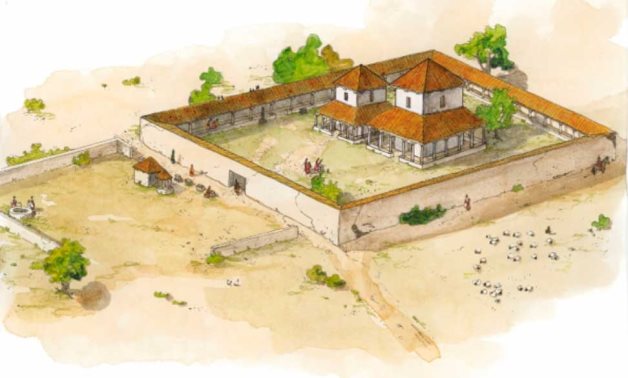
Illustration of what the 2,100-year-old Gallo-Roman worship complex found in France may have looked like - social media
CAIRO – 16 June 2022: French archaeologists found the long-lost remains of the 2,100-year-old Gallo-Roman worship complex in Rennes, Brittany (northwestern France) on a hilltop with sweeping views of the Flume valley.
The Rennes Gallo-Roman religious center was built after the Roman conquest of the Gauls in France in the first century BC. The Roman religious site in the Valley of Flume was huge. It was home to two temples, one of which may have been dedicated to the Roman god "Mars". So far, many metal artifacts have been found at the site, as well as the remains of two temple structures and a bath, according to ancient-origins.

According to evidence discovered by French archaeologists, the Roman complex continued to function as a religious center until the fourth century AD. This date marks the fall of the Western Roman Empire and the rise of Christianity as a religious organization that replaced Roman religious practices in Rome as well as in Gaulish France.

The site was identified for development, which led to preventive archaeological excavations of more than 17.3 acres of the site. This ancient holy place "provides an immersion into the daily life of an important Roman house of worship."

This Roman worship site was the center of ancient public life that was considered "essential". Most importantly, it helps archaeologists understand how the local population integrated with Roman religion, order, and social practices.
Comments
Leave a Comment